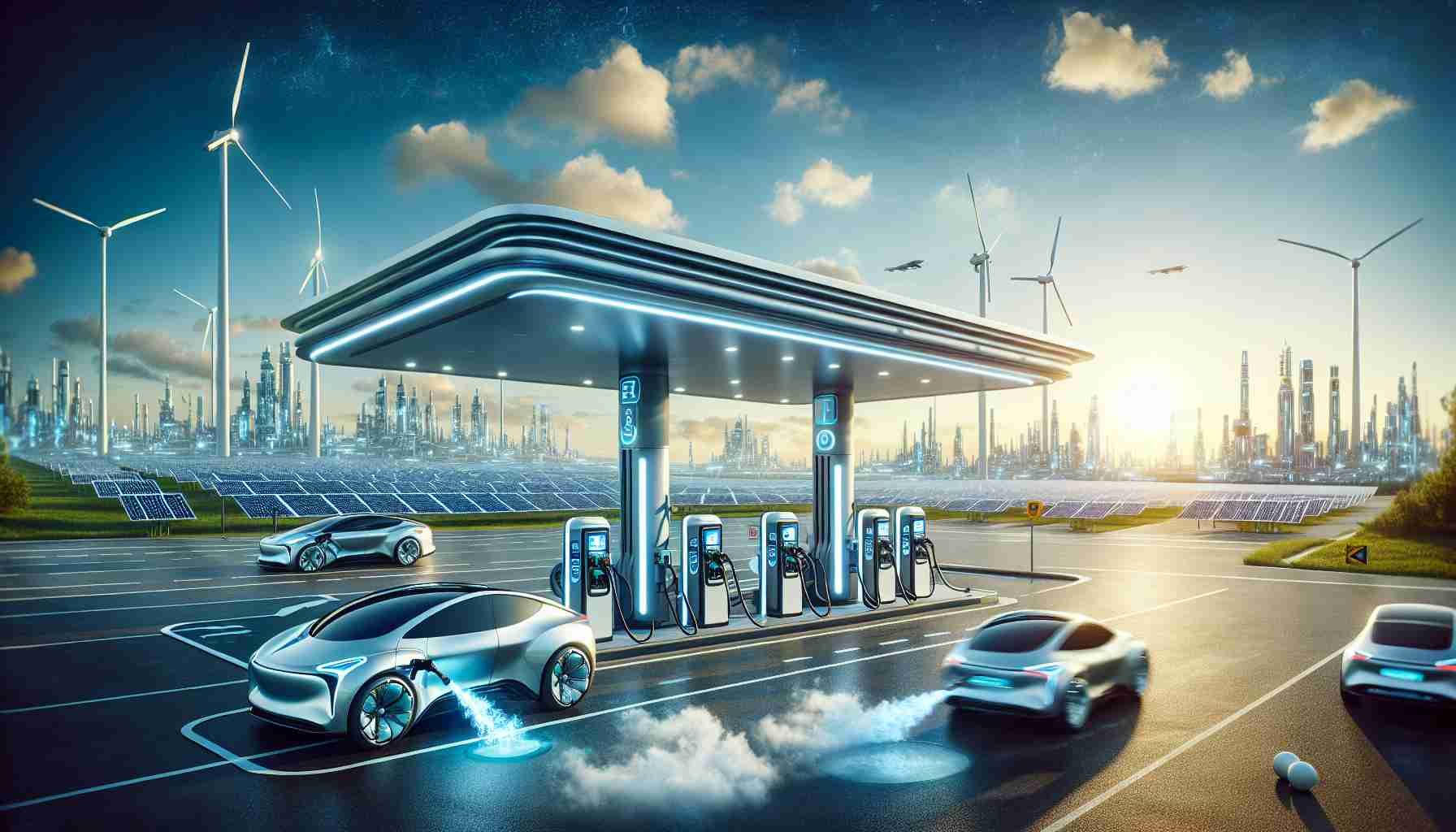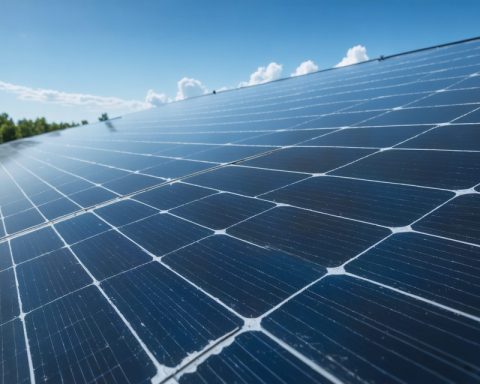Innovative Hydrogen Tank Design Approved
In a significant breakthrough for the clean energy sector, HD Korea Shipbuilding & Offshore Engineering (HD KSOE), part of the South Korean conglomerate HD Hyundai, has achieved Approval in Principle (AIP) from the American Bureau of Shipping (ABS) for its innovative hydrogen tank technology. This development marks a pivotal move toward enhancing the transportation and storage of liquid hydrogen on a larger scale.
The unique vacuum insulation system of the tank effectively maintains frigid temperatures of –253 degrees Celsius, significantly decreasing the time required to create a vacuum in larger storage tanks. This advancement promises safer, loss-free transit of large quantities of liquid hydrogen, a critical factor in the ongoing energy transition.
Officials from ABS highlighted the growing demand for sophisticated shipping systems to support the burgeoning need for large-scale liquid hydrogen storage and transportation. The project has attracted notable attention, with prominent industry stakeholders such as Woodside Energy, Mitsui O.S.K. Lines (MOL), and Hyundai Glovis collaborating on the development of an 80,000 cubic meter hydrogen carrier.
As the understanding of liquefied hydrogen transport evolves, HD KSOE remains dedicated to innovating energy shipping solutions, including LNG, LPG, and CO2. Company leaders emphasize their commitment to fostering collaborations with global entities to drive the energy transition and realize net-zero aspirations.
Broader Implications of Innovative Hydrogen Tank Technology
The recent approval of HD KSOE’s hydrogen tank design marks a pivotal moment not only for the clean energy industry but also for global energy dynamics. The reliance on fossil fuels has long been a linchpin of economic infrastructure; hydrogen’s emergence as a viable alternative can disrupt this dependence, potentially reshaping energy markets on an international scale. As countries move towards decarbonization, innovations like these are not just technical advancements but crucial stepping stones toward sustainable economies.
Furthermore, the impact on society and culture is profound. The adoption of hydrogen technology can lead to cleaner air and reduced greenhouse gas emissions, promoting healthier urban environments and lifestyles. Communities will benefit from reduced pollution levels, significantly contributing to public health. As hydrogen becomes more prevalent, public perception of energy sources may shift, leading to broader acceptance of renewable technologies and fostering a culture oriented towards sustainability.
However, environmental effects must also be scrutinized. While hydrogen itself is clean when burned, the methods of production need addressing; significant investments in green hydrogen production methods—such as electrolysis powered by renewable sources—are necessary to ensure truly sustainable practices. As technology continues to advance, the industry will likely see trends indicating a rise in augmented safety protocols and smart tank monitoring systems, propelling the sector into a new era of intelligent energy management.
In conclusion, the approval of such innovative storage solutions drives forward the global transition towards a more sustainable, hydrogen-based economy, emphasizing the interconnectedness of technology, culture, and our shared environmental responsibilities.
Revolutionizing Energy Transportation: The Future of Liquid Hydrogen Storage
Innovative Hydrogen Tank Design Approved
In a groundbreaking development for the clean energy sector, HD Korea Shipbuilding & Offshore Engineering (HD KSOE) has received Approval in Principle (AIP) from the American Bureau of Shipping (ABS) for its cutting-edge hydrogen tank technology. This innovation is set to revolutionize the transportation and storage of liquid hydrogen, addressing the increasing global need for cleaner energy sources.
Features and Specifications
The newly designed hydrogen tank incorporates a unique vacuum insulation system that effectively sustains temperatures as low as –253 degrees Celsius. This technology not only enhances the integrity of liquid hydrogen during transit but also drastically reduces the time needed to establish a vacuum in larger storage tanks. The expected outcome is a safer and more efficient means of transporting significant volumes of liquid hydrogen—an essential factor for the energy transition towards renewable sources.
Use Cases and Market Analysis
With the rise of the hydrogen economy, the demand for sophisticated storage and transport systems is at an all-time high. Major industry players, including Woodside Energy, Mitsui O.S.K. Lines (MOL), and Hyundai Glovis, are collaborating with HD KSOE on a pioneering 80,000 cubic meter hydrogen carrier project. This initiative represents a shift toward larger-scale operations that could pave the way for the widespread adoption of hydrogen as a clean fuel alternative in various sectors, including maritime shipping and heavy industry.
Innovations in Hydrogen Transportation
In addition to its hydrogen tank project, HD KSOE is dedicated to enhancing energy shipping solutions across various domains, including liquefied natural gas (LNG), liquefied petroleum gas (LPG), and carbon dioxide (CO2). This multifaceted approach positions the company to play a pivotal role in global efforts aimed at achieving net-zero emissions through innovative technologies.
Pros and Cons of the New Hydrogen Tank Technology
Pros:
– Improved Safety: The vacuum insulation reduces the risk of loss during transit, enhancing safety measures for transporting hazardous materials.
– Efficiency: Faster vacuum creation times improve operational efficiencies for shipping companies, enabling better logistics and reduced costs.
– Support for Global Energy Transition: The technology aligns with global efforts to shift towards renewable energy sources, making a substantial contribution to sustainability objectives.
Cons:
– High Initial Costs: The development and implementation of advanced technologies may require significant investment upfront.
– Regulatory Challenges: Adherence to strict regulations and obtaining approvals across various jurisdictions can complicate deployment.
Predictions and Trends
As hydrogen technology advances, projections indicate that the market for liquid hydrogen is likely to expand significantly in the coming years. Innovations like HD KSOE’s approved hydrogen tank can facilitate broader adoption of hydrogen as a viable alternative fuel, particularly in sectors that are hard to electrify, such as shipping and heavy manufacturing. With the foundational technologies now receiving approval, the industry may witness a surge in similar developments aimed at optimizing hydrogen operations.
For more insights on sustainable energy innovations, visit HD Hyundai.














